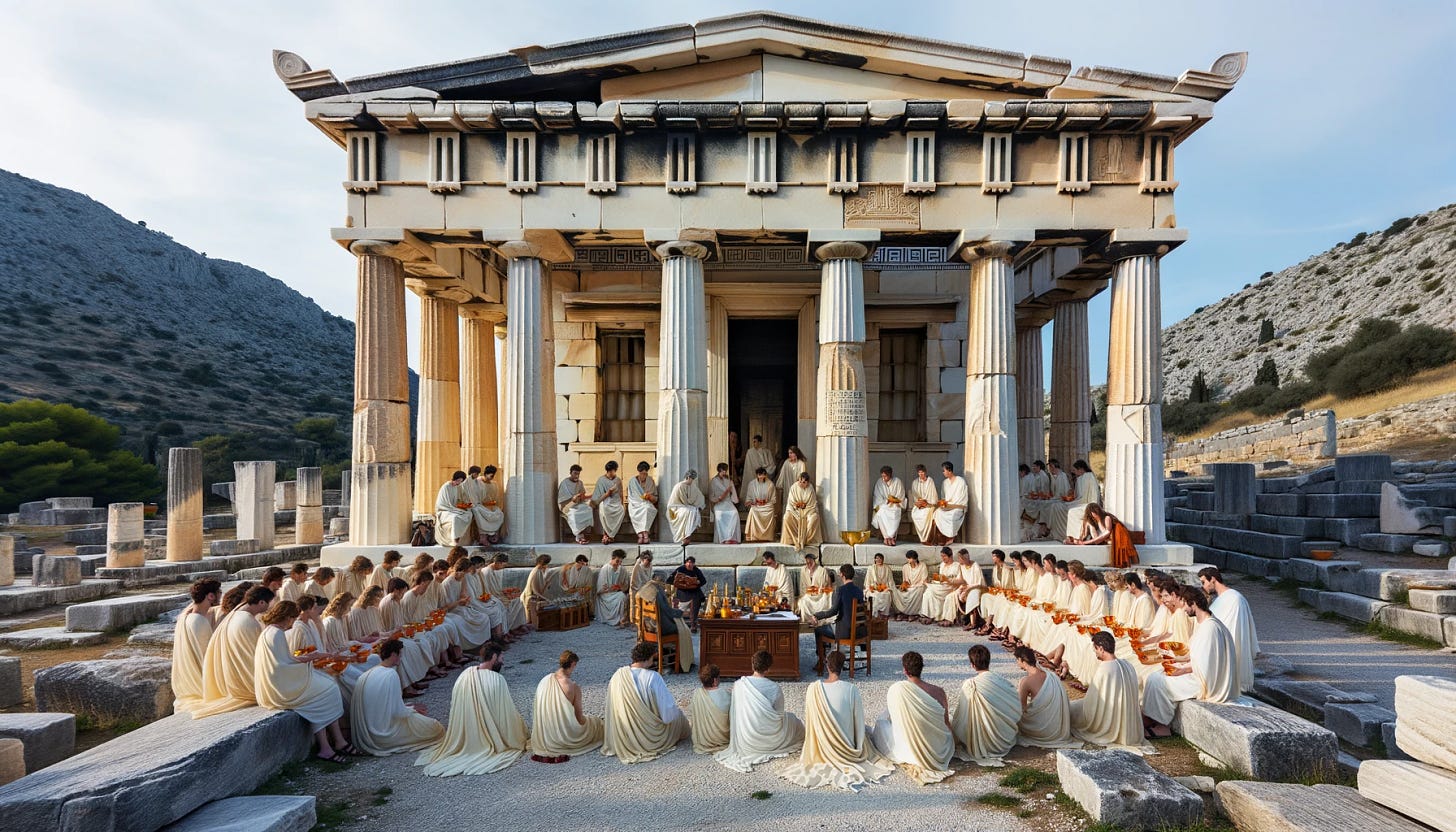The search for understanding, often represented as the pursuit of "light," is a fundamental goal for anyone keen on personal growth.
Freemasonry encourages its members to seek light, a symbol for truth and knowledge. This quest for enlightenment is not new; it echoes the aims of ancient rituals and mysteries, like the Eleusinian Mysteries of ancient Greece.
Understanding how people in the past sought the same light can offer us a broader view of our shared human journey.
Centuries before Freemasonry, people in ancient Greece participated in the Eleusinian Mysteries, religious events held in the town of Eleusis near Athens.
These Mysteries were open to anyone who spoke Greek and hadn't committed murder—a pretty inclusive criteria for ancient times. Wars even took a break to allow people to participate safely. The Eleusinian Mysteries aimed to help people gain a deeper understanding of life, death, and what might come afterward.
In essence, these Mysteries were another way of seeking light—in this case, enlightenment or a higher understanding of life's big questions.
At the center of the Eleusinian Mysteries was the compelling story of Demeter, the goddess of agriculture, and her daughter Persephone.
Persephone is happily picking flowers when suddenly, she is taken by Hades, the god of the underworld. Demeter (her mother), heartbroken, searches everywhere for her missing daughter. During this time of deep sorrow, Demeter neglects her duties and the earth becomes barren; crops fail to grow, leading to hunger and despair among the people.
Finally, Zeus steps in and negotiates Persephone’s return. However, there's a catch. While in the underworld, Persephone had eaten some pomegranate seeds, which means she must spend part of the year in the underworld with Hades. When she returns to her mother, the earth blossoms; it’s springtime, crops grow, and life is renewed. But when she departs again, the world turns cold and barren, symbolizing winter.
This myth wasn't just a story; it was an experience, a collective performance that brought people together. As they acted out or observed these ceremonies, people found comfort in the cyclical nature of life and death, reflected in the changing seasons. The myth offered hope, promising that just as spring follows winter, life's hardships too shall pass.
Farmers took cues for when to plant and harvest, while everyone else found a sense of unity and shared purpose. The story also subtly taught important moral lessons, like the value of perseverance during hard times, exemplified by Demeter’s continued kindness even in her sorrow.
Participating in this mystery might have been seen as a rite of passage for many, a marker indicating a deeper understanding of life's various stages.
While Freemasonry and the Eleusinian Mysteries are separate entities with different rituals and origins, they both aim to offer moral or philosophical guidance to their members. They both use the power of shared ritual and story to impart wisdom and build community.
However, it's important to remember that they are not linked in any direct or indirect way - other than they both mention pomegranates. But, each stands as its own tradition, teaching its own lessons, but they both reflect a shared human urge: the pursuit of light, of understanding, and of a life lived in harmony with deeper truths.
Understanding this common aim allows us to appreciate the richness of both traditions and reminds us that the quest for light—in whatever form it takes—is a journey well worth making.




